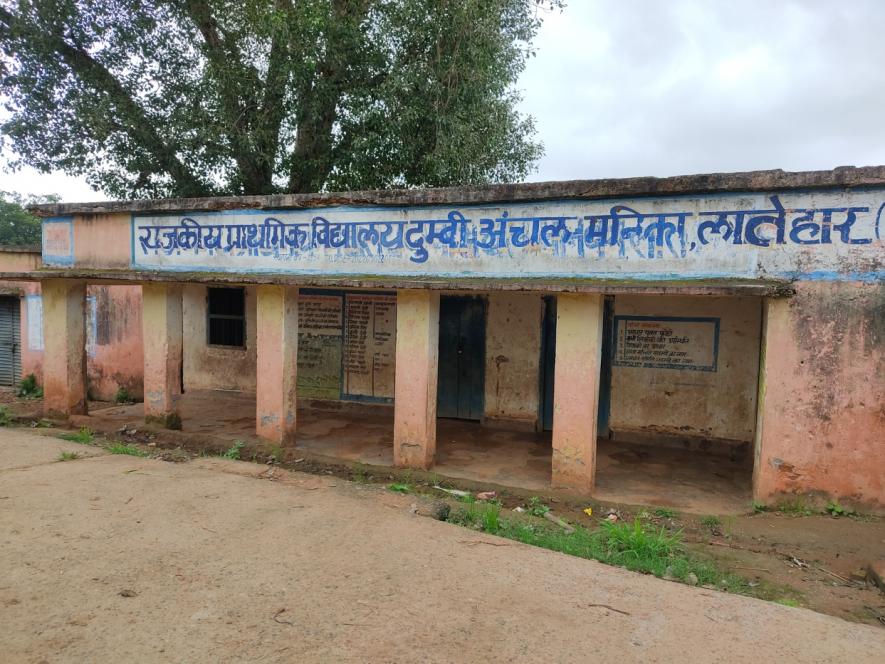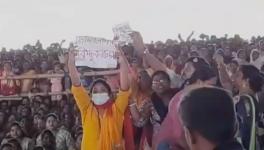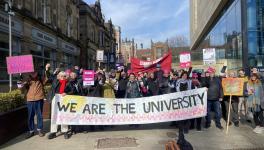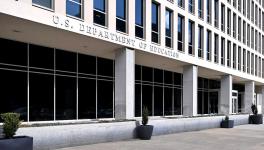Why Schools Should Not be Allowed to Open Prematurely

Dumbi Primary School/ Latehar/ Jharkhand
The Delhi government recently decided to reopen schools and other educational institutions after a long Covid-19 related shutdown. Previously, several other states had taken similar decisions. Such decisions have been backed by several experts and activists, principally on two grounds. Firstly, socially and economically disadvantaged sections have unequal access to online classes, which can only be addressed by reopening schools. Secondly, reopening schools and educational institutions is unlikely to lead to a severe wave or spike in Covid-19 infections. We disagree with both propositions.
Let us begin with the first. Unequal access to online education has indeed widened the learning gap between children from socio-economically disadvantaged and the privileged sections. It is because of two reasons. One, the socially and economically disadvantaged sections cannot afford the infrastructure required to attend online classes. This infrastructure might include laptops or smartphones, the internet, as well as a peaceful physical location to study.
Two, many students might not have been trained to use online tools. We contend that both of these are the results of deliberate policy choices. Policy in India has not adequately emphasised public funding to provide access and training to use computers and the internet. Likewise, public funding for providing physical space in neighbourhood schools, libraries etc., was never adequate.
Even before the pandemic, public expenditure on education in India was stagnant at an abysmally low figure of around 3.1% of the GNP. This puts India among countries that spend the lowest proportion of their GNP on education. The pandemic year saw even this low allocation slashed by about 6% in Budget 2021.
The size of the actual Covid-19 relief package in India was about 3.5% of the GDP. This, too, is one of the lowest globally and stands on the base of a weak social security system. The Covid-19 relief package was centred on providing relief to the corporate sector. As this study, which documents inequality of access to education notes, policy responses to address unequal access to pandemic-induced online education are limited.
The government’s attenuated policy response even in the face of a public health emergency, reflects its political priorities rather than the limitations of either the technology (in this context) or a specific mode of teaching. These political priorities are determined by the dialectics of domestic and international political economies. We argue against reducing the arguments for inclusive education to a facile choice between offline and online classes. In the absence of appropriate material conditions, the return of students to classrooms by itself is neither necessary nor sufficient for inclusive education.
Let us now turn to the second proposition. Epidemiologists work with versions of the compartmental (SIR) models to analyse the spread of epidemics like Covid-19. Originally formulated by Kermack and McKendrick, in its basic version, these models divide a population into various compartments, viz. the susceptible (S), the infected (I) and the recovered (R) with resistance to further infection.
During the progress of an epidemic, some of the susceptible persons who come in contact with infected persons also get infected. Some infected persons might die, while the rest move to the category of the recovered, developing antibodies or resistance against further infection. When a sufficient proportion of the population has left the susceptible group, the further spread of the epidemic gets restricted. This is because of a reduction in the possibilities of interaction between the susceptible and the infected. In this way, an epidemic reaches its natural limit or a state of spontaneous herd immunity.
However, this natural limit might involve both high mortality and morbidity. High mortality will result from a large number of infections if the existing medical infrastructure is inadequate. For instance, Italy, with the second-highest index of healthcare, had a case fatality rate of nearly 47% at the peak of its first wave of the pandemic. Vaccination, which leads to a fraction of the population directly moving from the susceptible to the resistant category, helps reach herd immunity without some of these associated human costs. However, herd immunity with or without vaccination might not be attainable because:
- When communities interact, there might be additional interactions between the susceptible and the infected belonging to different communities. As a result, despite an increase in infections, herd immunity might never be attained at the local community level.
- The antibodies acquired through either infection or vaccines lose their effectiveness after some time. In addition, if the number of infected persons remains high for a substantial duration, it facilitates the mutation of the virus into new variants, which might be resistant to existing antibodies and vaccines. As a result, the resistant group moves back to being susceptible, giving rise to another wave of the epidemic.
Both the above factors possibly triggered the deadly second wave of Covid-19 in India. Superspreader events such as mass religious gatherings and election campaigns led to interactions between susceptible and infected persons from different communities. They led to a greater spread of infections, facilitated several viral mutations and high mortality and morbidity. We believe the decision to reopen schools might trigger another severe wave because it would create newer inter-community and intergenerational interactions between the susceptible and the infected in and around the school ecosystem.
These interactions are more concerning than those in workplaces or markets because (a) they occur over a sustained period, typically in closed or confined spaces, and (b) children are less likely than adults to follow Covid-19 protocols. At the time of writing this article, all Indian children are unvaccinated. Since they were relatively less affected in the previous Covid-19 waves, many children may not possess antibodies that arise after recovery from infection.
In addition, most schools in India are ill-equipped to enforce Covid-19 protocols on their premises, primarily due to a lack of public funding. Even where it is possible to follow these protocols, there might be a trade-off between following Covid-safe behaviour and achieving learning outcomes, as this account by a school teacher in the United States describes. Existing experiences also suggest that school children may be asymptomatic carriers of Covid-19. In the absence of universal testing, they are more likely to spread the virus to their communities.
The optimal policy mix in such a situation is a combination of various non-pharmaceutical interventions (or NPIs, in the form of masking, lockdowns, travel restrictions etc.) along with a large-scale vaccination program to control the spread of the pandemic.
NPIs help limit new interactions between the susceptible and the infected, while vaccines aid in increasing the proportion of the resistant in a population. Our published work shows that NPIs are effective in controlling the pandemic. In our working paper with the NIPFP, we also show that NPIs are required to end the pandemic, along with fast vaccination. A premature reopening schools would not only allow the infections to increase, but also encourage the mutation of new variants. If these new variants escape existing vaccines, then the existing vaccination program will be rendered ineffective. It will make us vulnerable to a new wave of infections, possibly as severe as the second wave. Some epidemiological models that paint a more optimistic outcome gloss over several complexities we outline above. Their optimism, in our opinion, seems misplaced.
Reopening schools now might lead us to a public health setback. Experiences of countries such as the US, Israel etc., seem to demonstrate that premature reopening of schools and withdrawal of NPIs is likely to lead to a resurgence of the pandemic. However, the exact time at which such a resurgence will happen in a country such as India is difficult to predict. Still, a premature rescission of NPIs increases the likelihood of a new wave. We argue for an alternative strategy involving access to online education, which should be expanded through greater public funding. In addition, social welfare programs such as the provision of midday meals to schoolchildren might be resumed in all neighbourhoods to prevent large gatherings. The total economic cost (not to speak of the human cost) of these measures might be significantly lower than facing up to another devastating wave of Covid-19.
Soumya Datta is senior assistant professor in the Faculty of Economics, South Asian University, and C. Saratchand is associate professor in the Department of Economics, Satyawati College, University of Delhi. The views are personal.
Get the latest reports & analysis with people's perspective on Protests, movements & deep analytical videos, discussions of the current affairs in your Telegram app. Subscribe to NewsClick's Telegram channel & get Real-Time updates on stories, as they get published on our website.
























